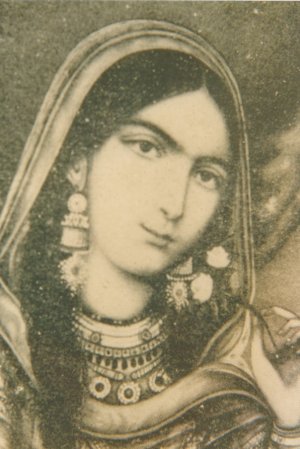
The city of Hyderabad is replete with imposing monuments which give a clue to the rich historical background of the land. It also boasts of the magnificent palaces like the Falaknuma palace, the Chowmohalla palace and the Purani Haveli.

Among these, the Falaknuma palace is a remarkable edifice which stands atop a 200 feet high hillock. It is located 5 kms from Charminar. Built by Nawab Vikar-Ul-Ulmara, the Prime Minister of Hyderabad, it is a stupendous palace and connotes the "heavenly abode". Observed from a distance, it appears to be floating among the clouds.

It is believed that the Falaknuma palace was gifted to the sixth Nizam of Hyderabad, Mehboob Ali Khan by the generous Nawab. The palace was constructed over a period of seven years and it covers a total area of 9,39,712 square meters.


A majestic testimony to the glory of the Nizams, it has often been referred to as the 'Mirror of the Sky'. The palace was designed by a Italian architect and follows a western architectural style. The Stables, Guesthouse, Garages, Gateways and associated structures complement each other. The interiors of the main building have an Italian marble staircase supporting marble figures and lined with portraits of British Governor Generals. The complex consists of a number of notable buildings apart from the Main Palace.
An extension was constructed by the Nizam to house the unique collection of artefacts acquired during his visit to the capital at the Delhi Darbar. Although in an architectural style distinctly vernacular, it does not clash with the pure Classical European lines of the earlier building but blends in harmoniously.

The palace is laid out in the shape of a scorpion with two stings spread out as wings on the north. The middle part is occupied by the main building and the kitchen and harem quarters stretch to the south. The Nawab being an avid traveller, various influences show on the palace architecture. The Falaknuma palace is a rare blend of Italian and Tudor architecture. Its glass stained windows throw a spectrum of colors into the rooms.
The palace also houses an exciting collection of rare treasures - paintings, statues, furniture, manuscripts and books collected by the Nizam from countries round the globe. The Jade as well as the crystal and gems collection of the Palace worth crores of rupees is considered to be unique in the world. The palace also has a library with a walnut carved roof, a replica of the one at Windsor Castle. The library had one of the finest collections of the holy Quran in India.

The Falaknuma palace has other unique things to its credit. It includes the largest Venetian chandeliers. It is said that it took six months to clean a 138-arm Osler chandelier and the palace has 40 such chandeliers adorning the halls ! The famed dining hall of the palace could seat 100 guests on a single table. The furniture is also very aesthetic. The chairs are carved rosewood with green leather upholstery. The tableware was made of gold and crystal to which fluted music was added.
The telephone and electrical system was introduced in 1883 by Osler and the palace has one of the largest electrical switchboards in India.
The ground floor of the palace houses the living quarters. The marbled staircase leads to the upper floor. It has carved balustrades which supports marble figures with candelabra at intervals. The ceiling of the reception room in the upper floor is carved with frescoes bordered with gilded relief. This floor offers a panoramic view of the city.
The ballroom contains a two-ton manually operated organ said to be the only one of its kind in the world. This apart the palace has as many as 220 lavishly decorated rooms and 22 spacious halls. The palace has some of the finest treasures collected by the Nizam.

In spite of being a modern and architecturally superior building in comparison to the other palaces of the Nizams, Falaknuma was hardly ever lived in. The brief stay of Sir Viqar and the Nizam apart, it was otherwise mainly used as a Guesthouse for visiting dignitaries and nobility.
However, the palace has proved to be fatal to those who have resided there for a long period. The scorpion-like structure is believed to be the cause of all deaths.
However, the palace has proved to be fatal to those who have resided there for a long period. The scorpion-like structure is believed to be the cause of all deaths.
Prior permission is required to visit this palace. And a visit to the Falaknuma palace is an awe-inspiring experience!
 I have 7 days more in Hyd... but i've still not been to the Falaknuma... if anyone has any clue as to how can i get permission to visit this place... then plz help.
I have 7 days more in Hyd... but i've still not been to the Falaknuma... if anyone has any clue as to how can i get permission to visit this place... then plz help.


No comments:
Post a Comment